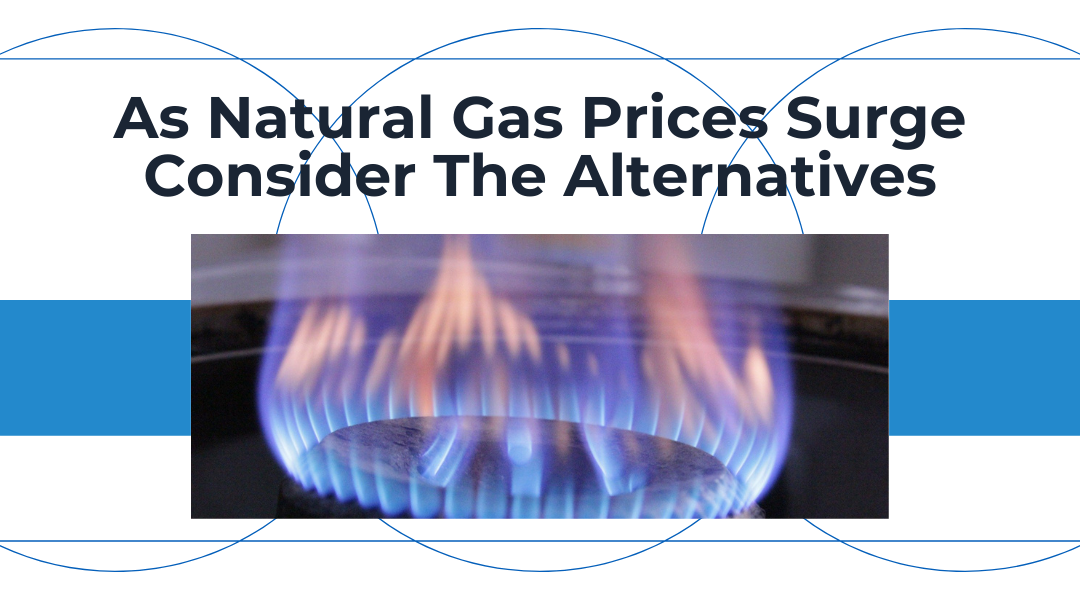What was supposed to be a season of low demand for natural gas has turned into surging prices, and it’s not even winter yet. In September alone, gas prices increased 17% and nearly doubled since six months ago. With natural-gas futures ending at $5.105 per million BTU in the middle of Sept., experts are cautioning against fuel shortages and even higher prices. Natural gas has not been this expensive since December 2008.
Even more trying, an unfortunate series of weather events has led to the early depletion of supplies at a time when drillers are usually filling storage containers to meet the high supply needed for the winter. According to the Wall Street Journal, “February’s freeze in Texas lifted demand while clogging wells with ice. June and July were the hottest on record and drought out West dried up hydropower production, which meant more gas than normal was needed to power air conditioners. Late last month Hurricane Ida forced nearly all of the Gulf of Mexico’s gas output offline. More than a third of the Gulf’s gas production remained shut as of Friday, according to the Bureau of Safety and Environmental Enforcement.”
It’s not just the U.S. that’s facing rising prices either. In fact, Europe and Asia are paying to ship natural gas to their shores and will continue to do so even if prices rise further because it’s still more economical.
What Can Be Done to Combat High Natural Gas Prices?
With higher prices looming, most people are already thinking about how they can avoid paying steep prices all winter long for heating. For individuals looking to save money on their home gas bill this winter there are steps you can take to lower your costs and ensure you stay warm:
- Keep equipment in good shape
- Make sure your space is properly insulated
- Set the thermostat and water heater at a lower temperature
- Keep doors and windows closed
- Consider investing in alternative energy sources – electric heat pumps, waste-oil burners, etc.
Is Burning Used Oil a Viable Choice to Save Money?
For businesses that generate used oil, transmission fluid, #2 oil, used crankcase oil, and hydraulic oil, there is a useful solution right at hand. Waste oil is considered a valuable commodity and many companies are paying a collector to remove waste oil. The waste or used oil a business generates has significant value, and now even more so with rising natural gas prices. Capturing the value of your used oil at the source, and not paying to have it taken away, increases efficiencies and decreases costs.
So, what does that mean this winter for a business that would normally be paying a heating bill for a warehouse or other large space? To start burning used and waste oil, you’ll need to invest in a waste-oil heater or boiler. With advances in waste-oil boiler and heater technology and the variety of tax credits and grants provided by states, there has never been a better time to consider burning your used oil for heat.
Calculating the savings from burning your waste oil is also easy with our waste oil savings calculator. The process of burning used oil is far from new for many industries, but it is quickly being more accessible and viable for many with the introduction of new technologies and safety measures, and the rise of new manufacturers of waste oil heaters and boilers.
For example, Used Oil Management Association (UOMA) members have their heater and boiler units tested for safety by independent laboratories such as Underwriters’ Laboratories (UL) and the Canadian Standards Association (CSA). To ensure each member adheres to the regulations, every used-oil heater and boiler produced by a UOMA member comes with a safety rating.
Automatic fuel cutoffs and other safety features, in combination with servicing and operational guidelines, ensure that current and future generations of used-oil heaters and boilers are safe, clean, and effective.

